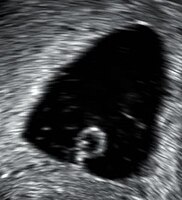
Photo from wikipedia
Obesity and relative leucocyte telomere length (RTL) are both linked to accelerated aging and premature mortality. We examined if nuchal subcutaneous adipose tissue (SAT) thickness, a surrogate marker of central… Click to show full abstract
Obesity and relative leucocyte telomere length (RTL) are both linked to accelerated aging and premature mortality. We examined if nuchal subcutaneous adipose tissue (SAT) thickness, a surrogate marker of central trunk-weighted obesity, is an independent predictor of RTL that provides information beyond BMI, metabolic and inflammatory markers. RTL and nuchal SAT thickness were determined in 362 participants of the STYJOBS/EDECTA study (STYrian Juvenile Obesity Study, Early DEteCTion of atherosclerosis), which included overweight individuals and matched eutrophic controls. Fasting plasma samples were used for the measurement of leptin, resistin, adiponectin, glucose, insulin, high-sensitivity C-reactive protein (hs-CRP), interleukin-6 (IL-6), liver enzymes, creatinine, cholesterol, high-density lipoprotein (HDL) cholesterol, low-density lipoprotein (LDL) cholesterol, oxidized LDL, triglycerides, homocysteine and uric acid. Furthermore, all participants underwent carotid artery ultrasound. Obese individuals had markedly higher body mass index (BMI), nuchal SAT thickness, hip and waist circumferences and carotid intima media thickness (IMT) than eutrophic controls. In addition, they showed typical biochemical abnormalities related to energy metabolism, systemic inflammation and liver function. RTL was inversely correlated with nuchal SAT thickness, IMT, hs-CRP, alkaline phosphatase, insulin, resistin, and leptin. Positive correlations were seen with homocysteine and creatinine. Stepwise linear regression analyses identified nuchal SAT thickness and insulin as the only significant predictors of RTL. In conclusion, nuchal SAT thickness is a robust predictor of RTL that provides information beyond traditional obesity-related metabolic and inflammatory biomarkers. This suggests an important role of fat depots at the neck for accelerated telomere shortening.
Journal Title: Scientific Reports
Year Published: 2020
Link to full text (if available)
Share on Social Media: Sign Up to like & get
recommendations!